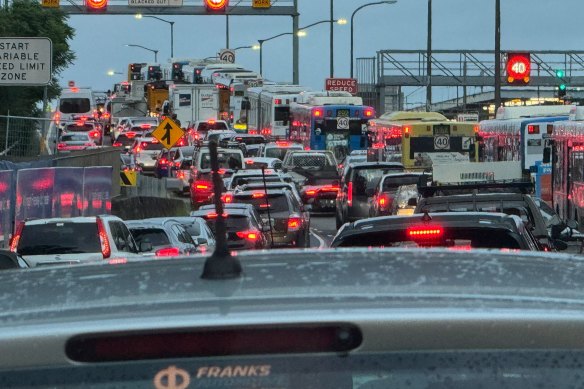Editorial
Record immigration drives capital city population differences
Each day, 391 people call Sydney their new home. It is a statistic that shows how Sydney is bursting at the seams – but it has also lost the title of Australia’s biggest city.
Australian Bureau of Statistics figures for 2022–23 show the populations of Sydney and Melbourne swelled by a record 310,000 in a single year as migrants surged back into the inner city and into student accommodation after the COVID epidemic population freeze. Melbourne’s population grew by 166,000, or almost 455 residents a day, while Sydney took 142,600 of the migrants. As a consequence, Melbourne’s urban area has a record 5.1 million people while Sydney is now home to 5.04 million.

Traffic on Sydney Harbour Bridge. Credit: Nick Moir
ABS capital city growth figures show that without the surge in immigration numbers, Sydney would have actually contracted due to the collapse in natural increase numbers. This difference between births and deaths has also been a contributing factor to Sydney losing the population title to the southern capital. Births outnumbered deaths in Melbourne while Sydney’s natural increase of 28,511 was offset by 38,425 people who left the city.
The discovery of gold drove the Yarra-side population past the harbour city in the 1850s. But the depression of the 1890s put an end to Melbourne’s pretensions and Sydney recaptured the crown in 1905 and held it for nearly 118 years until Melbourne’s recent attraction to new migrants tipped the balance.
The change of lead in the two-horse race that has amused generations does little to stymie Sydney’s ever-increasing population. Whatever the merits of less growth/more growth, NSW is undoubtedly heading into a period when, despite a growing population, there will not be a lot of new infrastructure coming online. The cost, funding and planning involved in building mega projects have now developed into a sore point. It is difficult to see any government or opposition proposing further multi-billion projects.
Which is to be lamented because growing populations need such projects.
The Herald article by Matt Wade, Janie Barrett and The Visual Stories Team on how construction of the M2/M7 transformed north-west Sydney shows there are long-term economic benefits and dividends from building such projects. Healthy pay packets, valuable houses, high education qualifications and other indicators are the dividends from public investments in road and rail that have been a crucial factor in the growth and affluence of north-western Sydney. In fact, with 3900 new arrivals, Marsden Park-Shanes Park in Blacktown was Sydney’s largest growing area, according to the ABS.
Urban development takes a lot of time and is often met with opposition. When the M2 was proposed in the early 1990s, former local MP and recent premier Dominic Perrottet recalled that the transport minister at the time, Bruce Baird, was censured in parliament and even received bullets in the mail.
“But can you imagine life today without the M2? The north-west of Sydney would never have been developed without it,” Perrottet said.
Despite being an essential part of the banter of inter-city rivalry, Sydney’s burgeoning size has not been without its critics. In 2000, then premier Bob Carr, a politician said to have the perspective of a historian, famously declared that Sydney was “full”. More people came anyway. And they will keep coming. But, as we now realise, bigger is not necessarily better. Sydney is a living example of what happens when population growth is allowed to exceed the ability of a society and its institutions to absorb the crush. Lack of housing, blocked roads, traffic jams and public transport delays are simply the latest reminder of such failures.
As we have said before, newcomers help drive the economy and bring in new ideas, but the trick is properly managing the influx. The main aim should be for Sydney to accommodate the people we have now and expect in the future, which comes down to matching infrastructure and environment planning with a workable, comfortable society.
The Opinion newsletter is a weekly wrap of views that will challenge, champion and inform your own. Sign up here.